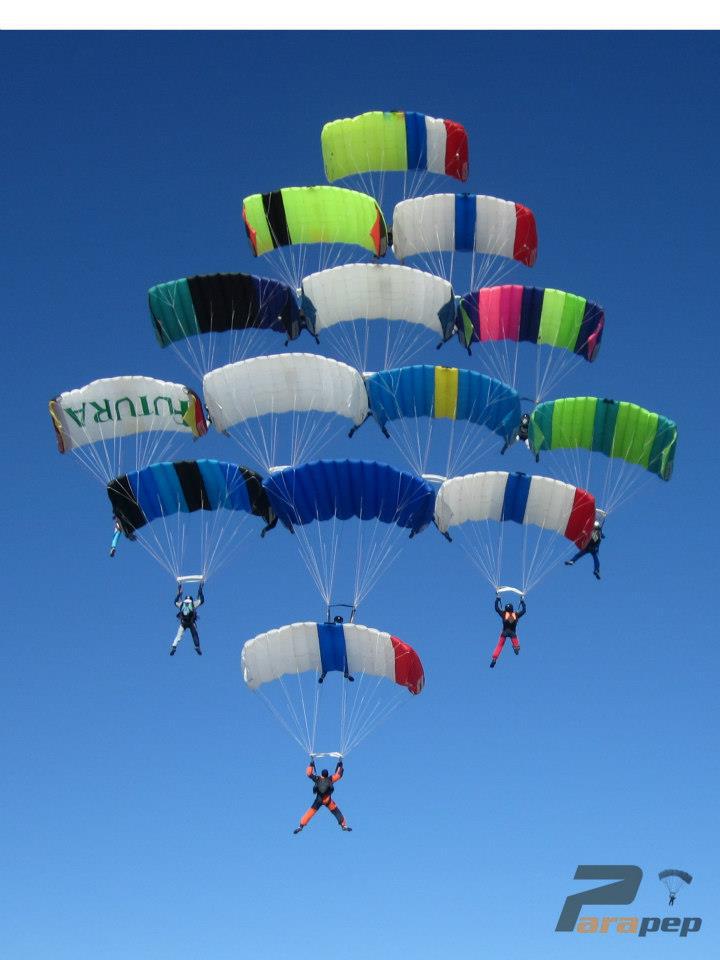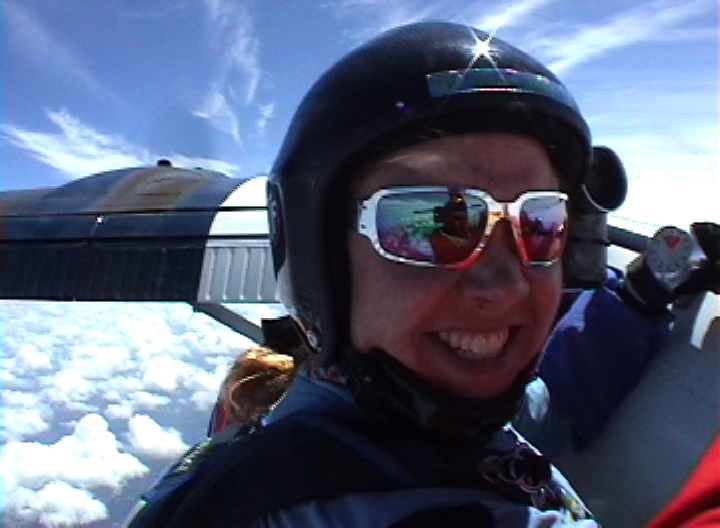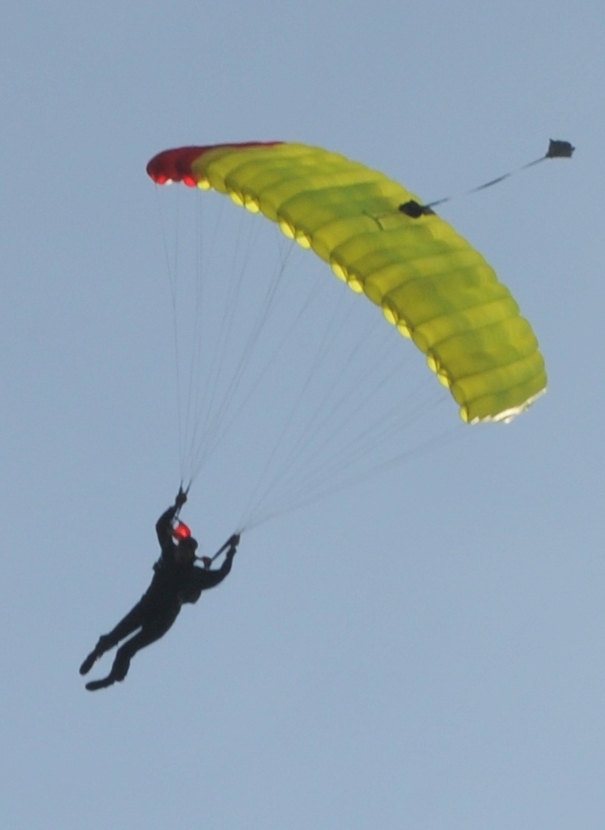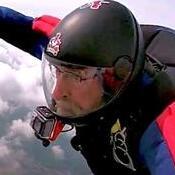Recommended Posts
dannydan 0
Follow the majority of ADVICE from my post on up!
When I bought my first rig i went BIG (exit otd195lbs main was 230) because of the infrequency of my jumps!
YOUR instructor KNOWS you and your skill level (better than we do) IF he/she is paying attention to you and should/will be able to let you know WHEN you are READY to downsize... While we may be "strangers" to you at the moment, we are family and are here to help you any way that we can!
"Advice is less heeded when needed most"
BSSL dude!
:DD
Quote[disclaimer]Hypothetically speaking. Trying to gather info from various sources. Will listen to the AFFI's.[disclaimer]
Novice jumper has put in a few dozen jumps and is buying a first rig. Body weight is 160 pounds. (Exit weight around 180?)
Which would you say is the best choice for jumps 150 - 200+?
* Rig with pilot 168 main, downsizable to a 150 (when the time is ripe)
* Rig with pilot 150 main, downsizable to a 140-130
Have you already made at least one skydive?
Start jumping first, buy later. Don't buy gear at this stage of your skydivingcareer.
CU
Jurgen
2shay 0
Baksteen 84
QuoteWould this not depend on a number of factors?
DZ elevation?
DZ size? (smalll Cessna or big turbine DZ)
Jumpers previous experience and performance on other canopies?
Does the jumper frequently visit other DZs?
Slight deviation from the OPs question, but what has this got to do with how appropriate a canopy is?
(Well, except for the third factor, even I understand that.)
DZ elevation:
OK, if you're jumping in the Alps with a DZ at 5K ASL I can understand that you'll be coming in for your landing a bit faster than at your home DZ which is below sea level - but if you're used to that?
DZ size:
All other things being equal, How often you jump should IMO be more important than from which aircraft you're exiting. Quality of Instruction on both types of DZ should not vary too much, I hope.
Visiting other DZs:
The only thing I can think of is that it might be bad to jump different types of rigs very often, as your handles could be in slightly different places.
( I recently switched from Vector Student to a rig which has release and reserve a few cm higher, close to the chest strap)
Also, different canopies behave differntly, i know that. On the other hand, learning to fly with different types of canopies (once you're comfortable with landing one type, that is) also means that you'll be better informed once the time comes to buy your own kit.
Another advantage of different DZs is that one is more "versatile" if you wish, in learning to spot, or even finding the DZ.
When i first went to another DZ I had a hard time finding it after exit, a thorough briefing nonwithstanding. I kinda missed the trusty old fixed recognition points of my home DZ.
NB. Kids, don't try this at home. I'm not offering advice, i am reasoning in my own limited, retarded way about something I don't fully understand.
If nothing else, that's something that DZ.com is good for - making you think.
If this stuff makes the topic deviate too much, i'm happy to start a new one.
~mom
billvon 2,434
>you'll be coming in for your landing a bit faster than at your home DZ
>which is below sea level - but if you're used to that?
The same size canopy at a higher elevation is less forgiving. It is generally the equivalent of going down a size or two. (At Lost Prairie, for example, a great many people cannot land their canopies that they had no problem with at sea level.)
In other words, if you are at a higher altitude, you should use a bigger canopy to get the same forgiveness/recovery/stopping power as you would at sea level.
>DZ size:
>All other things being equal, How often you jump should IMO be more
>important than from which aircraft you're exiting. Quality of Instruction
>on both types of DZ should not vary too much, I hope.
Small cessna DZ's generally put fewer people in the air than larger turbine DZ's. The more people in the air, the more likely you are to make a panic turn to avoid someone at 50 feet - and the panic turn under a small canopy is perhaps the #1 killer in this sport today.
>Visiting other DZs:
>The only thing I can think of is that it might be bad to jump different
>types of rigs very often, as your handles could be in slightly different
>places.
New DZ's require new landing patterns, awareness of new obstacles and new spotting landmarks to heed. All of which means you are more likely to land off, or land near an obstacle, or land too close to the lee side of trees. A larger canopy can turn that experience from an ambulance ride to a sore ankle.
>When i first went to another DZ I had a hard time finding it after exit, a
>thorough briefing nonwithstanding. I kinda missed the trusty old fixed
>recognition points of my home DZ.
Exactly. And that is exactly the _wrong_ time to be jumping the hot new canopy that needs a longer runway and gives you less time under canopy to find the DZ.
Quote
DZ elevation:
OK, if you're jumping in the Alps with a DZ at 5K ASL I can understand that you'll be coming in for your landing a bit faster than at your home DZ which is below sea level - but if you're used to that?
Brian Germain's Wingloading Never Exceed formula is built around how fast things happen and the experience you need to handle that.
He subtracts at least .1 pounds per square foot per 2000' of density altitude.
Don't forget that although standard temperature is 59 degrees F at sea level, it decreases at 3.5 degrees per thousand feet, so at 5000 feet MSL the standard temperature is 41.5 degrees Fahrenheit. Every 10 degrees above standard temperature adds 600 feet so density altitude somewhere like Mile High skydiving (5050 feet MSL) is 8000 feet on a 91.5 degree summer day. We've seen 9000-10000 feet reported from the airport weather unit.
Baksteen 84
~mom
Quote*disclaimer - novice jumper here*
With an exit weight around 180, why wouldn't the jumper be considering a Pilot 188 for the first canopy and possibly downsizing to the 168 or 150 later?
That is *exactly* what I did, and I never regretted it! I'm around that weight, started off with a 188, downsized to a 168 at around 300 jumps, when I felt ready, and I love it. Had some rough landings while I was learning, but the larger canopy and lighter wingloading sure helped me keep from getting hurt. I would definitely *not* recommend a 150 as a 1st canopy for a newer jumper at that wingloading.
Enemiga Rodriguez, PMS #369, OrFun #25, Team Dirty Sanchez #116, Pelt Head #29, Muff #4091
Quote...The only thing I can think of is that it might be bad to jump different types of rigs very often, as your handles could be in slightly different places.
(I recently switched from Vector Student to a rig which has release and reserve a few cm higher, close to the chest strap)
That really shouldn't make a difference. You ARE looking for the handles, right? You ARE putting your eyes on them before taking the grips, aren't you?
Only three excuses for NOT looking first:
1. You a large-breasted woman who can't see the handles even if you looked (the Amazon mod might help you out here).
2. You are in such a severe situation that you CAN'T see them even if you did look.
3. Other oddball excuse that somebody will think of next.
I think we're all Bozos on this bus.
Falcon5232, SCS8170, SCSA353, POPS9398, DS239
sparkie 0
Quote[disclaimer]Hypothetically speaking. Trying to gather info from various sources. Will listen to the AFFI's.[disclaimer]
Novice jumper has put in a few dozen jumps and is buying a first rig. Body weight is 160 pounds. (Exit weight around 180?)
Which would you say is the best choice for jumps 150 - 200+?
* Rig with pilot 168 main, downsizable to a 150 (when the time is ripe)
* Rig with pilot 150 main, downsizable to a 140-130
I'd go with a 168 at exit weight of 180. That gives one a nice wl. The pilot isnt the most agressive canopy so if the novice jumps regularly and can land consistantly good i see no obvious problems.
I'd also buy a rig that can hold al least the next downsize.
hth
IanHarrop 37
http://www.bigairsportz.com/pdf/bas-sizingchart.pdf
As you probably already have noticed, you will get two kinds of replies about wingloading in these forums. 1: the people who tell you to be conservative, and 2: Swoopers who downnwized early themselves, and who think smaller is better for everyone because of the incredibe penetration through the wind and flare.
The fact remains that smaller means faster, which means less time under canopy, which means less time to find the landing area, or outs. faster also means a faster landing, which means that it will hurt more when you mess up.
Another thing to think about is: the freefall is pretty much the same with a 190 as it is with a 170. I don't really think you'd notice the difference.![]() And: Is swooping your goal?
And: Is swooping your goal?
I listened to the swoopers and got a too small canopy, but canged my mind, and got something bigger before I got the chance to jump it. It really got me thinking. This is not a safe sport, and IMHO, you should really do some thinking yourself, not just "follow the trend" with small canopies for novices.
I know people who stayed "big" for long, to the point when people talked about their "huge" canopies, but they are still in the sport, some of them have downsized, some have even downsized a lot, and they keep landing safely. Interestingly, they weren't blown away, and they did have decent flare power when they were flying their big canopies.
Just my 2 cents.
Have fun flying your new Pilot, I want one too. ![]()
I'm a BIG, TOUGH BIGWAY FORMATION SKYDIVER! What are you?




.thumb.jpg.4bb795e2eaf21b8b300039a5e1ec7f92.jpg)




brian germain's canopy downsizng chart and the info that goes along with it is worth a look. (i just don't know how to link it here)
Share this post
Link to post
Share on other sites